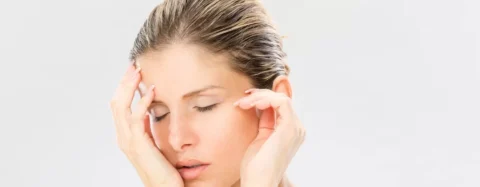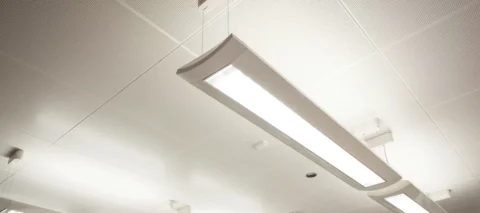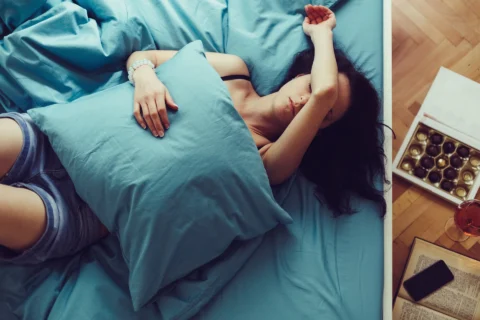The Botox cosmetic is a popular solution for forehead lines and other signs of facial aging. Patients can even choose to have Botox injected around their eyes to get rid of the fine lines around the area. In fact, many people frequently ask how many units it would take to smooth out the wrinkles around their eyes.
So how many units of Botox injection are needed for the eyes? It depends on exactly which areas around the eyes require treatment. The glabellar lines (or the ‘11’ between the eyes) will require around 20 – 30 Botox units, while crow’s feet around the eyes require 24 units on both sides. Less common eye Botox treatments are the under-eye Botox and brow lift procedures, which require around 8 units and 5 units per eye respectively.
Botox Units For The Eyes
Before talking about how many Botox units are needed to treat the delicate areas around the eyes, it’s important to first understand what Botox units are. Allergan, the makers of Botox, sell each Botox vial with 100 units of Botox each. Each Botox unit injected into the body is correlated to a fixed number of botulinum toxin molecules, and one injection is equivalent to 4 Botox units.
Although there are recommendations for how many units are required to treat specific areas, it ultimately differs from person to person. The exact number of Botox units should be customized to match your individual characteristics, unique needs, and cosmetic goals. For Botox treatment sites around the eyes, here are the estimated number of units needed:
Crows feet: 12 units
One of the most highly requested treatment sites are the lateral canthal lines, or crows feet, which appear at the edges of the eyes. The FDA-approved Botox dose for these wrinkles are 12 units per eye, which means 24 units for both eyes. An experienced injector would apply the Botox at 3 injection sites, at 4 units each.
Frown lines: 20 units
Older patients have pesky ‘11’s that appear in between the eyes and above the eyebrow. Also known as glabellar lines, this facial area is often treated in conjunction with the forehead wrinkles. The FDA-approved prescription for frown lines are 20 units at 5 injection sites, but most patients usually need 12 units at 3 injection sites only.
Eyebrow lift: 5 units
When we age, the skin around our eyes loses its firmness and elasticity. Lines and wrinkles form around the brow area, while sagging occurs due to gravity. Drooping brows are also thought to be caused by contractions in the glabella muscles and the orbicularis oculi. In order to stop the brow from being pulled down, patients need 5 Botox units for a non-surgical, Botox brow lift.
Under-eye: 8 units
Although under-eye Botox treatments are considered to be an ‘off-label’ use, many patients ask about it to remove bags and dark circles in the lower eyelid. As it is not FDA-approved, only a few, small studies have been conducted for this procedure. Results do suggest that 8 units of Botox cosmetic injections can reduce wrinkles and bagginess, but intense side effects may occur. And contrary to popular belief, Botox is not capable of making unwanted dark circles vanish.
Less Is More: Understanding Botox
Botox reduces the appearance of horizontal forehead lines and facial wrinkles by temporarily paralyzing certain muscles in the face, like the glabella muscle or frontalis muscle. When muscle contraction stops, dynamic wrinkles are virtually eliminated and smooth out on their own. This function is performed by botulinum toxin type A — the active ingredient in Botox and similar products like a Dysport injection — which blocks the nerve signals of dynamic muscles.
As Botox can spread 30 – 45 mm from the injection site, a little can go a long way. For optimal results, it’s best to start as small as possible then inject more into the treatment area as needed. The goal is to achieve the results you want, using as few Botox units as possible. It’s especially important to begin with Botox conservatively if you’re having treatment done for the first time.
Botox takes effect 2 weeks after the initial injection so it’s good to wait for the results to appear. Remember, you can always get more Botox but you can’t undo it; if you’re stuck with a bad Botox job, it won’t wear off for another 3 – 6 months. With a skilled injector or a trained dermatologist, you’d be sure to have safe and natural-looking results. In some cases, however, your cosmetic surgeon may recommend a dermal filler instead of Botox instead.
Factors That Affect Number of Botox Units
The number of Botox units required to treat the area around the eyes varies from patient to patient. Some people require more (or less) doses than others, depending on certain factors like:
- Muscle strength: Strong muscles tend to need more Botox to inhibit them. Men, for example, often require higher Botox forehead doses because they have larger, thicker facial muscles compared to women. Some muscles (like the forehead muscle) are also more likely to be stronger because they are more frequently used.
- Metabolism: Your metabolism is the unique rate of how your body processes a Botox injection. A patient with a higher metabolism — usually those who exercise frequently or have a physically active lifestyle — may need more Botox units, as their bodies burn through the Botox quickly.
- Personal goals: Would you prefer to smooth out your wrinkles and retain muscle movement? Or have a wrinkle-free face but have no muscle movement at all? Depending on your aesthetic goals, you would need fewer units if you want to move your muscles freely. If you want to address deeper wrinkles, on the other hand, your plastic surgeon would prescribe more Botox units.
Aside from these three factors, your age, habits, and lifestyle may also influence the number of Botox units you will need. For a more accurate idea of how much Botox you will need to achieve your aesthetic goals, it’s best to undergo a one-on-one consultation with an experienced Botox provider.
Are Off-Label Botox Uses Safe?

Botox is an FDA-approved treatment for a number of cosmetic and medical conditions, including excessive sweating (hyperhidrosis), uncontrollable eye twitching (blepharospasm), and crossed eyes (strabismus).
However, many practitioners continue to find off-label uses for Botox. While they may be effective in some cases, there is a limited number of research done on the long-term effects and safety of Botox in off-label treatment areas. As the area around the eyes is delicate, it’s best to take precautions against side-effects such as:
- Droopy eyelids
- Brow ptosis or sagging eyebrows
- Double vision
- Dry eyes
- Decreased eyesight
- Swollen eyes
- Difficulty closing the eyes
If you’re experiencing any of these side-effects, it’s best to call your provider immediately.
Patients who are considering off-label or preventative Botox uses should consult thoroughly with a qualified, board-certified cosmetic surgeon; they may be able to recommend injectables or an alternative procedure that achieves the desired results.
Visit Ethos Spa For A Better Look
As one of New Jersey’s highly-rated med spas, Ethos Spa is dedicated to providing quality treatments using the latest techniques and technologies. Our board-certified surgeon and expert medical staff have performed countless Botox procedures on thousands of patients, so you’re guaranteed to get the results you want safely and effectively. Book a consultation with Ethos Spa today.







